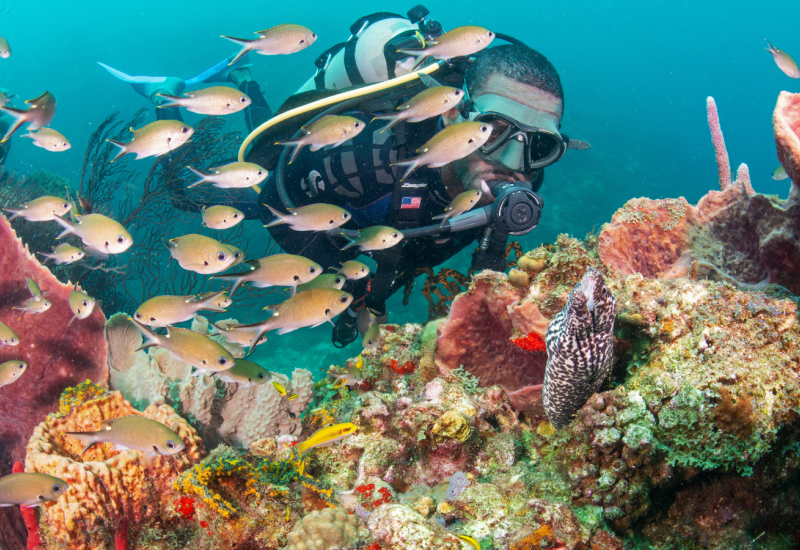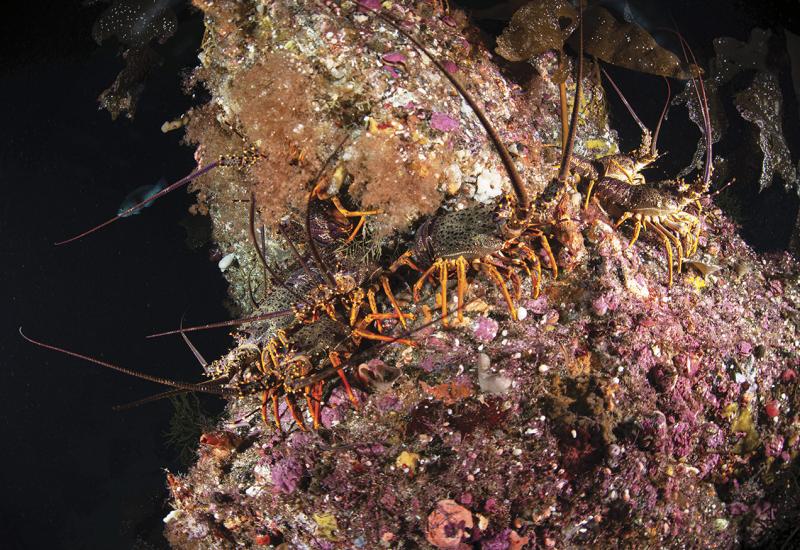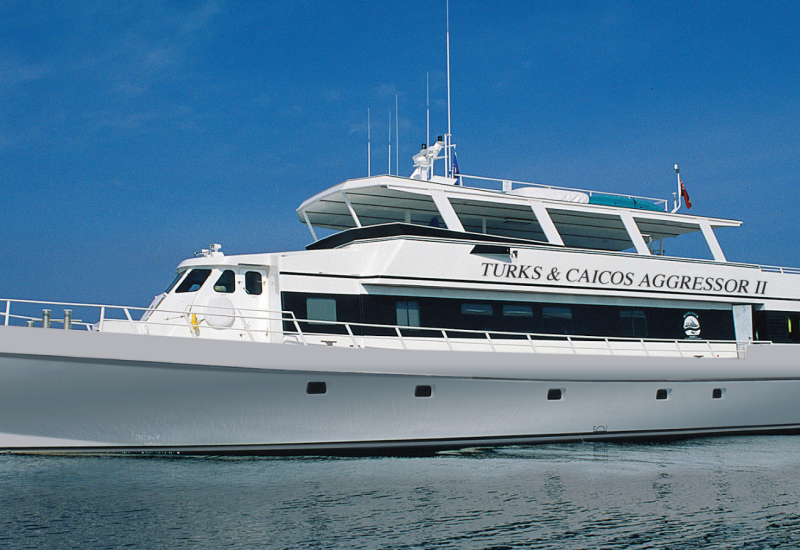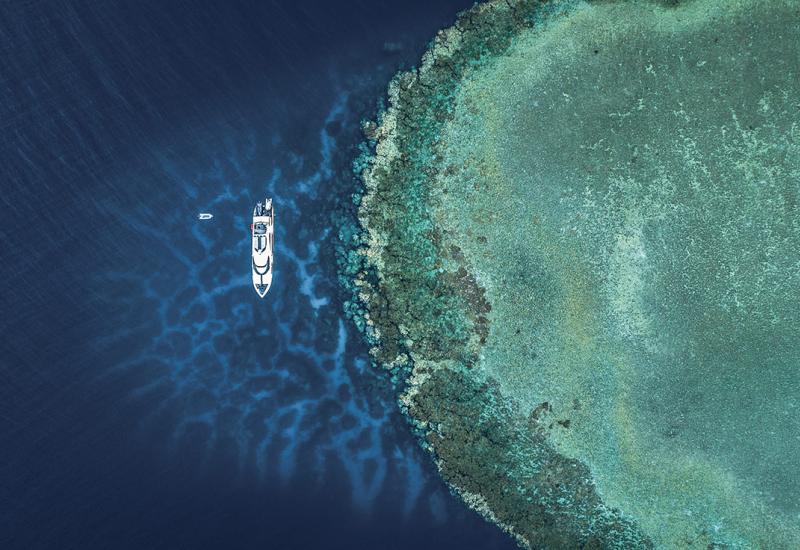Diving The Eagle Off Islamorada

David BenzWhile generally intact, the Eagle was broken in two by Hurricane Georges.
Many a diver has beelined it from Key Largo to Key West–windows rolled down, sea breezes blowing and island tunes blasting–unaware that they were driving past one of the most legendary dive sites in all of the Florida Keys, just offshore Islamorada, the beautiful middle zone in the island chain.
In the clear warm waters here, the 287-foot wreck of the Eagle freighter reigns as one of the most exciting wreck dives to bag among the nine sunken ships that make up the Florida Keys Wreck Trek.
Named for the Eagle tire company, which made use of the mighty coastal freighter for deliveries when she was still in service, the Eagle was intentionally sunk in 1985 off Lower Matecumbe Key as part of the greater Florida Keys Artificial Reef Association project. One of the most successful artificial reef projects in the country, it also included the sinking of such popular Keys wrecks as the Benwood, Thunderbolt and Duane.
“The Eagle is a sought-after, flagship wreck,” says Eric Billips of Islamorada Dive Center, which takes divers to explore the wreck three times a week. “If you’re going to Islamorada, that’s the wreck; that’s the crown jewel to dive.”
When it was the Eagle’s turn to be detonated to be intentionally sunk as an artificial reef, things didn’t go quite to plan.

David BenzAs an artificial reef, the Eagle continues to bring enjoyment to countless divers.
The ship was supposed to be scuttled right next to the Alexander Barge, another artificial reef in Islamorada. But the Eagle broke free of her moorings before the explosives to sink her could be detonated, so she ended up coming to rest in a spot farther away from the barge than originally planned. Although she landed upright and intact, that wasn’t to be the forever scenario here in the hurricane belt.
In 1998, the punishing swell of Hurricane Georges picked up the Eagle, broke her in half and laid her back down on her starboard side. Then Hurricane Irma delivered more crippling blows in 2017, “smushing the wreck even more, particularly her bow,” and damaging one of her masts, says Billips. For divers, the storm damage opened the wreck and made diving the Eagle an even more exciting experience.
“Even though she was intentionally sunk like most of the other wrecks in the Keys, her butt’s been kicked so bad by these hurricanes it looks like she was torpedoed,” Billips says of the ship. “She broke in half right in front of her keel and is laid on her side, completely opened up, so you don’t need to do a penetration to look down into her.”

David BenzThe coral growth that has emerged since the ship’s sinking is fabulously multi-colored.
The Eagle now rests in a sandy bottom at about 110 feet, and divers can start exploring when they hit her gunnels around the 75-foot mark. The pilot house is an open area that’s fascinating to peek in to without having to run a reel, says Billips.
“It’s a cool experience. I always take my divers through the pilot house,” he says. “It’s not claustrophobic or scary because there are windows all around. Divers can get inside of a wreck and they’re not freaked out about it.” Billips recommends shining your dive light on the sponges inside, which pop with color under bright light.
Because the wreck has been down so long, it’s absolutely loaded with life. Massive sea turtles, eagle rays and schooling pelagic fish like pompano and amberjack are commonly spotted. And while it’s rare, Billips says sailfish and marlin have also been seen cruising the Eagle.
And when it comes to spotting bull sharks, this might be the best place in the Keys.
“They’re always circling the perimeter, afraid of us,” says Billips. “They’re very timid and usually stay away from divers.” These stout, gray sharks are breathtaking to see in their natural habitat.
The Eagle is commonly used for teaching penetration dives since it is easily entered, Billips says. The mess hall where the crew once ate is a popular spot to enter, even though it can be disorienting with everything laying on its side.
And since the Eagle isn’t as big as wrecks such as the Spiegel Grove, and is largely broken apart in two sections, it’s almost impossible to find yourself in a spot with no natural light.
“She’s made for your advanced diver who wants to do something a little more adventurous,” Billips says.
The prop and keel are also visible since the wreck rests on its side, the sand under it washed out by the current. Look for monster goliath grouper that usually hang out there in groups.
The blast holes where the dynamite was detonated to sink the ship can also be seen, including one under the prop that divers can penetrate during wreck courses, Billips says.
“You can enter there and traverse up and into the mess hall, then through a mechanical room and kitchen,” he says. “That’s where we conduct our wreck specialty classes and run our lines.”
It all adds up to one of the best, most surprising and fishiest dives in the Florida Keys.
“She’s had her battles, but she’s still down there and glorious and we love her,” Billips says.










